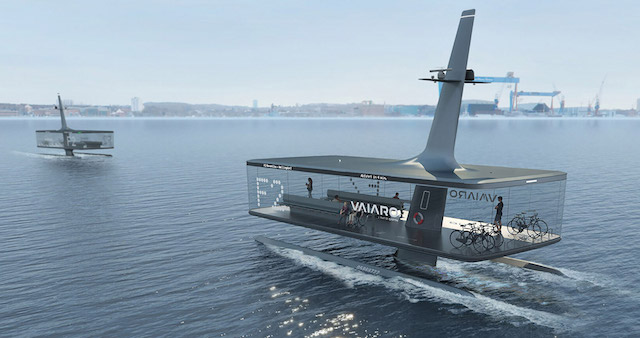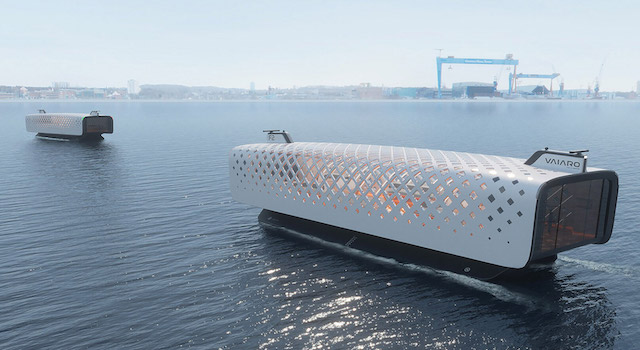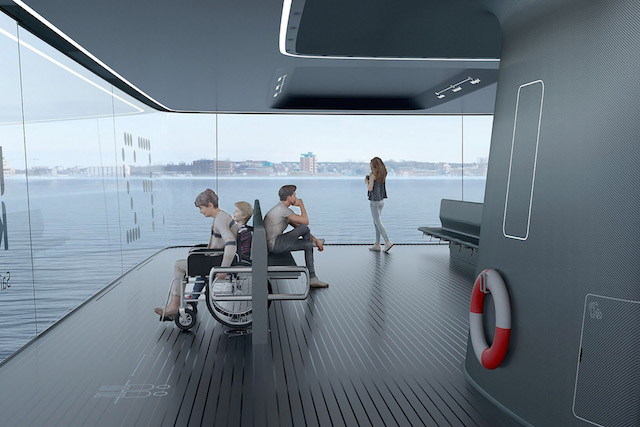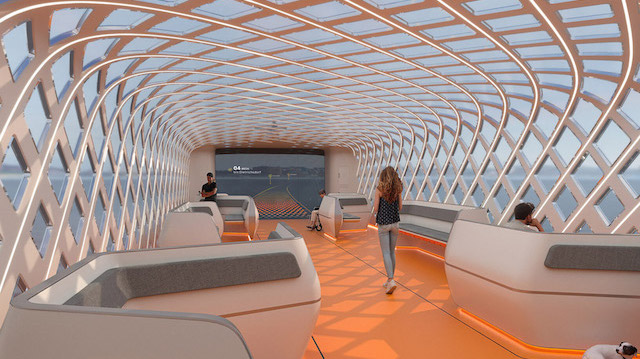
A computer-generated study in Germany (see video) imagines a time when commuters on the country’s Kiel Fjord waterway will be carried by zero-emissions ferries.
The look into the future is a giant leap ahead of the current Auckland passenger ferry operation, for instance, where the vessels to Waiheke Island and elsewhere are the biggest users of fossil fuels in the country after Air New Zealand.

Germany’s ‘Captn Vaiaro’ – Clean Autonomous Public Transport – project has been put together by partners from the Kiel University of Applied Sciences.
The university concept has future battery-electric ferries working the canal and carrying both passengers and products.
There are two designs — a “sleek, glazed vessel”, says the university, and a rectangular ferry with a lattice-style covering.
The Kiel Fjord (Kieler Forde in German) is an 18km-long inlet formed by ancient glaciers . It links the Baltic Sea to the city of Kiel (population 250,000) in northern Germany.
It is often referred to as the busiest artificial waterway in the world and at its mouth is around 7km wide. Cruise ships regularly berth near the city.
Kiel was a major base and shipbuilding centre for the German navy during World War II. The city and its surrounds were heavily damaged by Allied bombing.
The base was of such strategic importance to the Western Alliance that British wartime leader Sir Winston Churchill ordered that it be captured and secured once Allied forces penetrated deep into Germany.
Churchill didn’t want it falling into Russian hands. He feared a nightmare scenario where the Russian navy could use it to potentially control the Baltic Sea from its bases in Russia and Soviet-occupied countries like Estonia, Latvia, and Lithuania.


